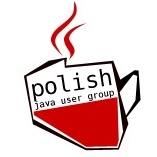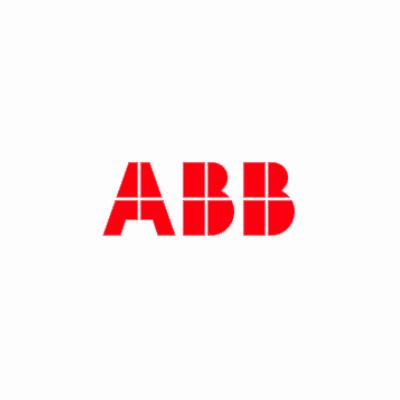Spotkanie PJUG
Our next meeting is going to happen on 4th of December 2017 at 6:00 p.m. This time we have a pleasure to guest three speakers:
- Ed Burns with the presentation on " JavaOne Wrapup, Serverless, Fn Project"
Join us for this last minute look at the JavaOne that was. Ed Burns, JavaOne veteran, will share his experiences and some of his sessions in this JUG session. Come learn about Java EE, EE4, Serverless Java, and the hot new Fn Project.
Ed Burns is a Consulting Member of the Technical Staff at Oracle America, Inc. and has worked on a wide variety of client and server side web technologies since 1994, including NCSA Mosaic, Mozilla, the Sun Java Plugin, Jakarta Tomcat and, most extensively, JavaServer Faces, on which he is the co-spec lead. Ed is also the co-spec lead for the Servlet specification. Ed is an experienced international conference speaker, with consistently high attendence numbers and ratings at JavaOne (Rockstar award winner 2016), Devoxx, DevNexus, JAOO, JAX, W-JAX, No Fluff Just Stuff, JA-SIG, The Ajax Experience, and Java and Linux User Groups. He has published four books with McGraw-Hill, JavaServerFaces: The Complete Reference (2006), Secrets of the Rockstar Programmers: Riding the IT crest (2008) JavaServer Faces 2.0: The Complete Reference (2010) and Hudson Continuous Integration In Practice
(2013). JavaOne Rockstar
More details on Ed can be found at http://ridingthecrest.com(http://ridingthecrest.com/).
- Ivan Vaskevych with the presentation on "InfluxDB and Grafana fighting together with IoT data attack"
They promise that IoT (Internet of Things) will conquer the world. But what will tackle billions of bytes that flow into our servers every hour?First released in 2013, InfluxDB is used by eBay, Cisco, IBM and other big companies. It’s a production proven time-series storage.During this talk we're going to get acquainted with it and see how InfluxDB can help to solve your problems.We’ll see how to quickly install it on Amazon Web Services platform and how it scales.And for the dessert, we’re going to draw pretty Grafana graphs using InfluxDB data.
Ivan is a professional who thinks that "programming" means more than just writing a code. With 15 years experience in IT, Ivan tasted different aspects of the industry, including project management, system and DB administration, and software engineering. Lately, he has been delivering scalable solutions at Airly.
- Piotr Wittchen with the presentation on "Get ready for java.util.concurrent.Flow!"
W Javie 9 otrzymamy do dyspozycji nową klasę z pakietu java.util.concurrent o nazwie Flow. Idea stojąca za tym rozwiązaniem wywodzi się z projektu Reactive Streams. W związku z tym, najnowsza wersja Javy będzie posiadała natywne wsparcie dla tworzenia reaktywnych aplikacji zgodnych ze wspomnianym standardem. Już dziś możemy z tego standardu korzystać i warto się z nim zapoznać wcześniej. Co więcej, od jakiegoś czasu mamy do dyspozycji istniejące implementacje Reactive Streams, które są sprawdzone i gotowe do użycia w projektach na platformę JVM. Wszystkie biblioteki implementujące ten standard mogą ze sobą współpracować dzięki wspólnemu API. Programowanie reaktywne pozwala na pisanie wydajnych aplikacji, które optymalnie wykorzystują zasoby sprzętowe. To podejście pozwala również na dodanie czytelnej warstwy abstrakcji dla aplikacji wielowątkowych oraz wygodne zarządzanie strumieniem danych bez utraty czytelności kodu. Warto dodać, że programowanie reaktywne sprawdza się zarówno na serwerach obsługujących dużą liczbę żądań, jak i na urządzeniach mobilnych, gdzie większość operacji musi być wykonywanych asynchronicznie bez blokowania głównego wątku. Podczas prezentacji chciałbym przedstawić na przykładach popularne implementacje standardu Reactive Streams w Javie 8 takie jak RxJava2 i Project Reactor oraz przykładową, prostą implementację tego samego standardu w Javie 9 z wykorzystaniem klasy java.util.concurrent.flow.
Piotr jest absolwentem studiów inżynierskich i magisterskich na wydziale Automatyki, Elektroniki i Informatyki Politechniki Śląskiej w Gliwicach. Posiada kilkuletnie doświadczenie programistyczne. Ostatnio zajmował się głównie tworzeniem aplikacji serwerowych, mobilnych oraz bibliotek w języku Java. Aktualnie pracuje w gliwickim oddziale firmy SAP Hybris jako programista Java w zespole rozwijającym projekt Enterprise Commerce Platform. Od ponad dwóch lat jest zaangażowany w projekty open-source. Jest także członkiem Silesian Java Users Group (SJUG) oraz prowadzi prywatnego bloga technicznego pod adresem http://blog.wittchen.biz.pl







